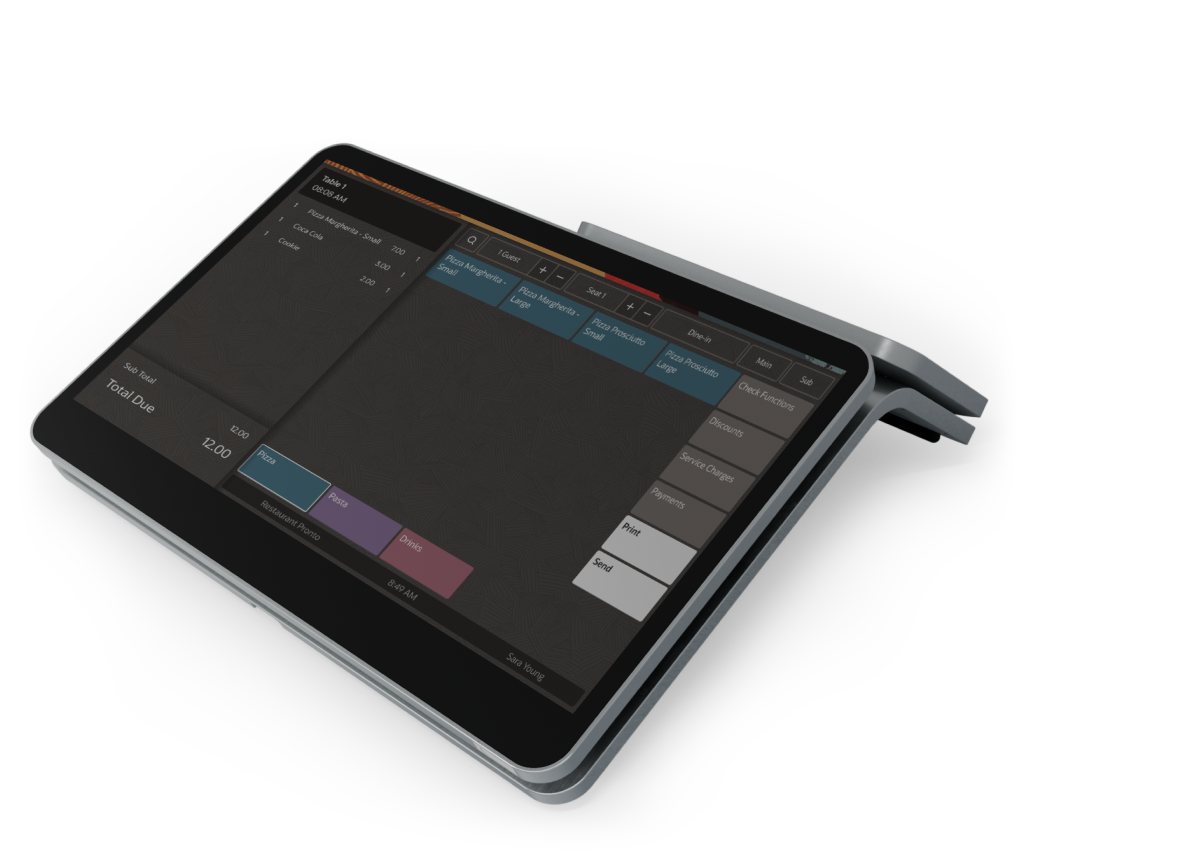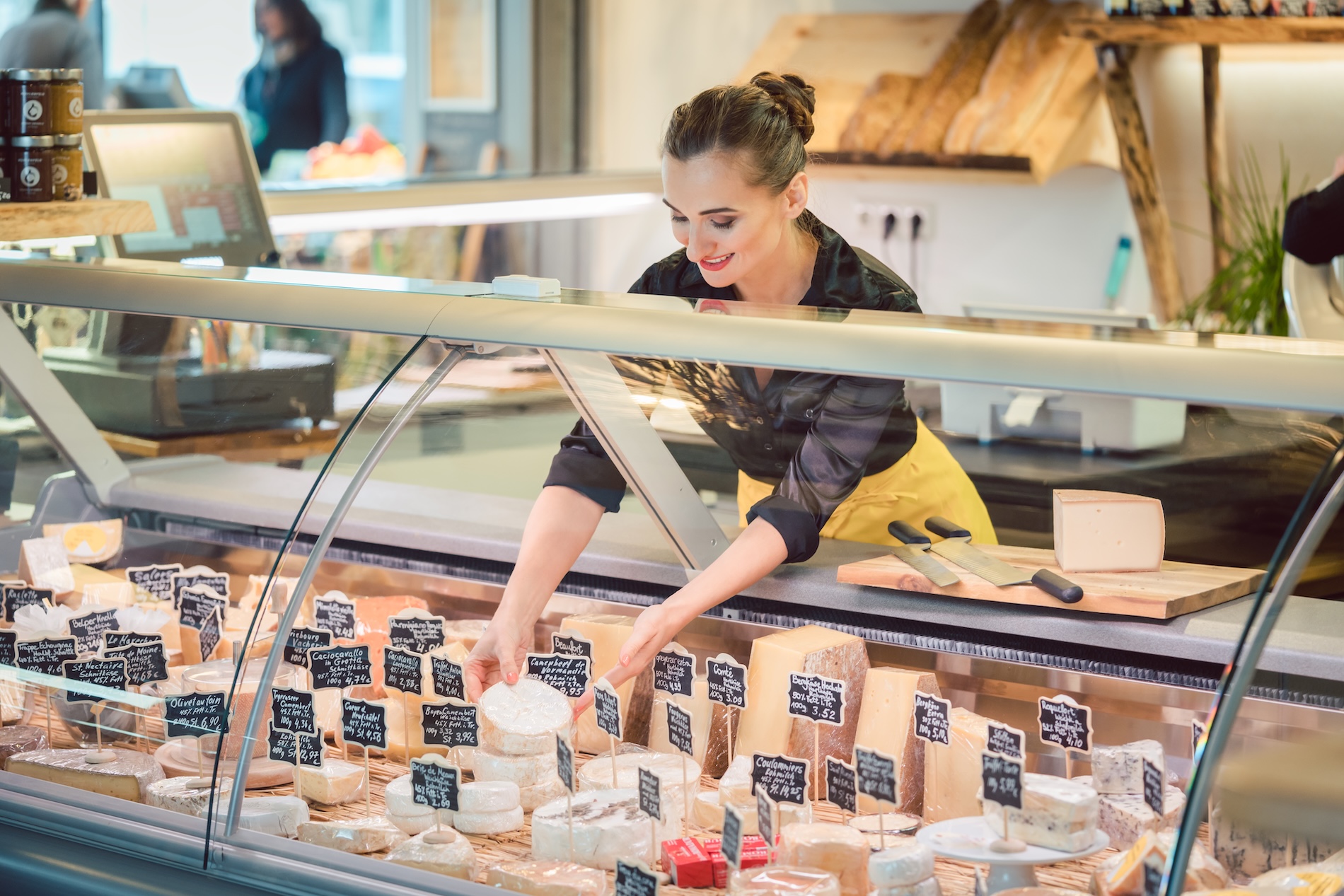- 1. Reducing food waste from the menu planning stage
- 2. Adding more plant-based dishes to the menu
- 3. Sourcing ingredients locally
- 4. Increasing energy efficiency
- 5. Encouraging guests to adopt sustainable dining habits
- 6. Recycling and composting
- 7. Choosing eco-friendly packaging
- 8. Integrating technology and automation in restaurant operations
- What to read next
- Frequently asked questions
Restaurant sustainability trends include reducing food waste, offering more plant-based menu items, sourcing ingredients locally, and minimizing your energy use and carbon footprint. Additional restaurant sustainability practices include teaching guests to be more eco-friendly, recycling, choosing eco-friendly packaging, and using technology to increase automation and efficiency.
8 Restaurant Sustainability Trends in 2026
- You can reduce food waste from the earliest stages of menu planning;
- Adding more plant-based items to the menu will help you attract a wider crowd;
- Sourcing ingredients locally will show customers that you care about the environment;
- Increasing energy efficiency can help you optimize restaurant operations and save money;
- Encouraging guests to adopt more sustainable habits will forge a strong relationship with the community;
- Recycling and composting are must-do sustainable kitchen practices for restaurants in 2026;
- Employing technology and automation can help you increase sustainability and streamline operations.
1. Reducing food waste from the menu planning stage
91% of customers prefer to buy from businesses that are actively working to reduce food waste. In 2026, the zero waste food trend will continue to grow.
The good news is that reducing food waste can start early in a restaurant kitchen, even from the menu planning stages. To create a more sustainable restaurant menu, use the same ingredients across multiple dishes, including different parts of the same ingredient.
For example, if you have a whole chicken, you can use it to cook multiple delicious dishes:
- Use chicken breasts for a main dish, such as chicken breast stuffed with spinach and cheese.
- Use the chicken bones for a nice chicken noodle soup broth.
- Use chicken livers for chicken liver pâté.
Using every part of your ingredients is also referred to as the “root-to-stem” or “nose-to-tail” method. This not only prevents you from wasting food, which will attract more eco-conscious customers, but also lowers food costs, which contributes to your restaurant’s long-term success.
Here are some additional restaurant sustainability ideas on how to reduce food waste in your menu:
- Include seasonal specials that use locally sourced ingredients. This way, you can adapt to ingredient availability and reduce waste.
- Focus on a smaller menu with a limited number of dishes so you can control ingredient usage.
- Use surplus ingredients for daily specials, so nothing goes to waste.
- Standardize portions to ensure consistent serving sizes and reduce over-serving. Additionally, offer multiple portion sizes, such as small, regular, and large, to prevent uneaten food on your customers’ plates.
GloriaFood’s online menu editor enables you to easily customize every dish with multiple portion sizes, so you can follow the latest restaurant sustainability trends.
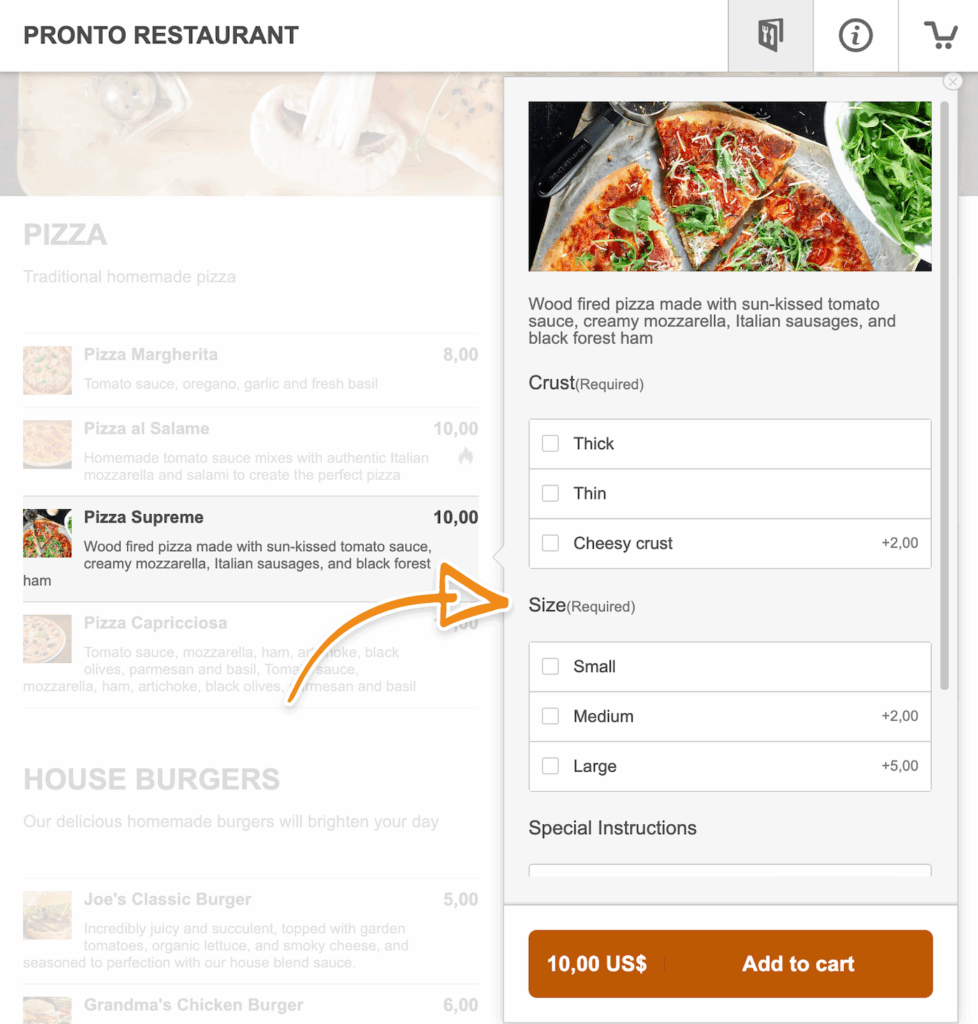
If you want to find out how easy it is to craft your restaurant menu with GloriaFood, check out the video below:

- Use excess ingredients to create staff meals for employees. That way, they can enjoy a delicious meal, and no food goes to waste.
- Extend the shelf life of perishables by picking, fermenting, or canning vegetables and fruits.
- Get creative with leftovers and transform them into new dishes. For example, you can use stale bread for croutons or leftover rice for fried rice.
- Add sharing plates and half-portions to the menu so customers can order as much as they want.
- Encourage customers to take leftovers home in eco-friendly takeaway containers so they can also participate in restaurant sustainability trends.
2. Adding more plant-based dishes to the menu
Plant-based ingredients, especially when they are locally sourced, tend to have a smaller carbon footprint than animal-based products, increasing sustainability in a restaurant. They also have a longer shelf life, which reduces the likelihood of waste.
Research conducted by Forbes found that restaurants that switched to vegan menus reported an increase in sales and a boost in their social media following.
That doesn’t mean that for your restaurant to follow these restaurant sustainability trends, it needs to go full vegan. However, you can add some plant-based items to the menu to increase restaurant sustainability, such as:
- Vegetable-forward entrées;
- Plant-based burgers and sandwiches;
- Salads and bowls;
- Soups and stews;
- International plant-based dishes;
- Plant-based comfort food;
- Vegan and vegetarian desserts.
Make sure you label these items as vegetarian, vegan, nut-free, or gluten-free, and add a list of ingredients, allergens, and nutritional values to keep customers informed.

Here’s how easy it is to do all these things with GloriaFood’s menu builder:

3. Sourcing ingredients locally
According to restaurant sustainability trends, 56% of restaurant customers intentionally support restaurants that source their ingredients locally.
If you want to lower your carbon footprint, promote sustainable agriculture practices, reduce waste, and have a constant supply of seasonal, fresh ingredients, you need to do the same.
Here are some tips on finding sustainable ingredient suppliers for your restaurant:
- Reach out to nearby farms and inquire about supplying your restaurant with fresh produce. Visiting the farms directly means you can see how they work and sample their products firsthand.
- Ask other businesses in the area that you admire for their sustainability where they source their ingredients from.
- Visit farmers’ markets to build a relationship with local farmers and suppliers and see which ones are better suited for your restaurant.
- Look for organizations dedicated to supporting sustainable agriculture. In the US, groups like Slow Food USA or LocalHarvest can connect you with sustainable suppliers.
- Go to online directories created to facilitate the relationship between buyers and suppliers, such as Local Food Marketplace.
- Check for organic certifications, such as USDA Organic or Certified Organic, or sustainable farming certifications, such as Certified Naturally Grown, to find suppliers who adhere to your own environmental standards.
4. Increasing energy efficiency
Energy efficiency is one of the key restaurant sustainability trends in 2026 and beyond. Reducing your restaurant’s energy consumption can lower your carbon footprint, increase your eco-friendliness, and cut costs by up to 30%.
Here are a few tips for increasing energy efficiency at your restaurant:
Lighting:
- Switch to LED bulbs that last longer and produce less heat than traditional bulbs.
- Install skylights and larger windows to reduce light bulb use during the day and make the most of natural light.
- Install motion sensor lighting in areas like bathrooms and storage rooms to avoid staff or customers accidentally leaving the lights on.
- Use light dimmers in your dining area to save energy and create an intimate ambiance.
Equipment:
- Purchase energy-efficient appliances such as refrigerators, freezers, ovens, ice machines, and dishwashers that have the ENERGY STAR label.
- Schedule routine maintenance for all the equipment to extend its lifespan.
- Use smart cooking practices such as finishing cooking dishes with residual heat from the stove and using cookware that matches the burner size to avoid heat loss.
Heating and cooling:
- Install smart thermostats that adjust the temperature during peak and off-peak hours to reduce energy waste.
- Properly seal and insulate your restaurant to prevent heat loss.
Appliances and plugs:
- Use smart power strips that automatically cut power to electronics when they are not in use.
- Turn off appliances such as blenders, coffee machines, and printers when not in use.
Water heating:
- Insulate hot water pipes to reduce heat loss.
- Install tankless or instant water heaters that provide hot water only when needed and eliminate standby energy losses.
Ventilation:
- Install energy-efficient kitchen exhaust hoods with adjustable fan speeds based on cooking activity.
- Ensure that hoods are only turned on when necessary, not when using equipment that doesn’t produce much smoke.
5. Encouraging guests to adopt sustainable dining habits
If you care about the environment, your restaurant will attract like-minded people who also do. Which means you can follow restaurant sustainability trends together.
Here are some ways you can encourage customers to become more environmentally friendly:
- Ask them whether they’d like to opt for tap water instead of bottled water.
- Encourage them to participate in food waste reduction initiatives or other eco-friendly events that your restaurant might organize.
- Create a program where customers can bring their own reusable containers for leftovers or to-go beverages. Reward these choices with discounts, freebies, and exclusive promotions.
With GloriaFood’s Promotions Module, you can create personalized coupon codes for offers so only certain customers can redeem them based on the “bring your own container” initiative.

Check out this step-by-step tutorial to learn how easy it is to create a variety of promos with GloriaFood:

- Encourage servers to suggest locally sourced, plant-based menu items to customers, explaining the benefits of these restaurant sustainability trends.
- Create did you know cards to stick on tables with eco-friendly tips, such as “Did you know recycling one aluminum can saves enough energy for you to power a TV for 3 hours?”
- Add a donation box at the counter for any eco-friendly cause in your area.
6. Recycling and composting
Recycling and composting are two extremely important restaurant sustainability trends that have been steadily growing in popularity over the last few years. 60% of consumers also prefer restaurants that practice sustainability by recycling.
Here are some tips that can help your restaurant recycle more effectively:
- Conduct a waste audit where you sort and analyze the types and volumes of waste your restaurant generates. Identify recyclable and non-recyclable materials, as well as organic waste, so you can determine the area you need to focus on.
- Set up designated recycling stations within your restaurant. Clearly label the bins for different types of waste, from plastic to paper, glass, and metal, and ensure the bins are easily accessible to staff.
- Train your staff on why it’s important to recycle and how to do it properly. You can also create posters to stick above the recycling stations explaining which type of item goes where.
- Recycle cooking oil by partnering with companies that provide collection services. These companies ensure the oil is properly recycled and turned into biodiesel or other products.
- Partner with recycling organizations or waste management companies that can advise you on best practices, ensure the waste is properly recycled, and help you implement an efficient system and communicate it to your staff.
If you want to start composting, follow these pointers:
- Start by researching local composting regulations since your area might have specific rules for commercial establishments. You can check with your local health department or waste management authority.
- Decide on the composting method you want to use. Options include on-site composting if you have the space, partnering with a composting facility if you don’t, or contracting a composting service.
- Train your staff on the importance of composting and how to properly separate organic waste. Create a visual list of which ingredients can be composted, such as fruit and vegetable scraps, eggshells, coffee grounds, and tea bags.
- Set up clearly labeled compost bins in the kitchen or backyard and ensure they are easily accessible to staff.
- Maintain a healthy composting balance of brown (carbon) and green (nitrogen), and regularly aerate the compost to speed up decomposition and avoid odors and pests.
- Use the compost in your restaurant’s garden if you have one, or donate it to local farms or community gardens. This completes the process of turning waste into nutrients for growing other fruits and vegetables.
7. Choosing eco-friendly packaging
55% of US customers said they are more likely to purchase from a QSR restaurant that uses recyclable packaging.
The good news is that environmentally sustainable restaurants nowadays have a wide range of eco-friendly packaging they can choose from.
Here are the most common types of packaging highlighted by restaurant sustainability trends:
- Paper and cardboard packaging, such as recycled paper bags, kraft paper boxes, and corrugated cardboard boxes.
- Plant-based bioplastics like polylactic acid containers, cornstarch cutlery and straws, or bagasse packaging.
- Glass and metal containers such as jars, bottles, or stainless-steel lunch boxes.
- Bamboo and wood fiber packaging, such as bowls and trays.
- Recyclable and compostable plastic alternatives such as PET containers or PLA and PHA packaging.
When deciding on the best type of eco-friendly packaging for your restaurant, consider these factors:
- Menu: The type of food you serve will influence your packaging requirements. Hot foods may require insulated packaging, liquids will need leak-proof containers, while delicate pastries may benefit from extra protection when transporting.
- Cost: Some sustainable packaging options are more expensive upfront, but can become a better investment in the long term. Depending on your budget, you can choose the most cost-effective option for you.
- Durability: You need to ensure that the packaging material you choose will withstand factors like grease, moisture, and high temperatures.
- Branding: You need to look for packaging that you can easily customize with your restaurant name, logo, and tagline.
- Customer experience: Did you receive any feedback from customers on what type of packaging they would prefer? Ensure it is easy to handle, open, and dispose of properly.
8. Integrating technology and automation in restaurant operations
Did you know that using technology is one of the main restaurant sustainability trends? By leveraging tools like POS systems, QR code menus, and online ordering, restaurants can reduce waste and become more eco-friendly. Here’s how!
POS system
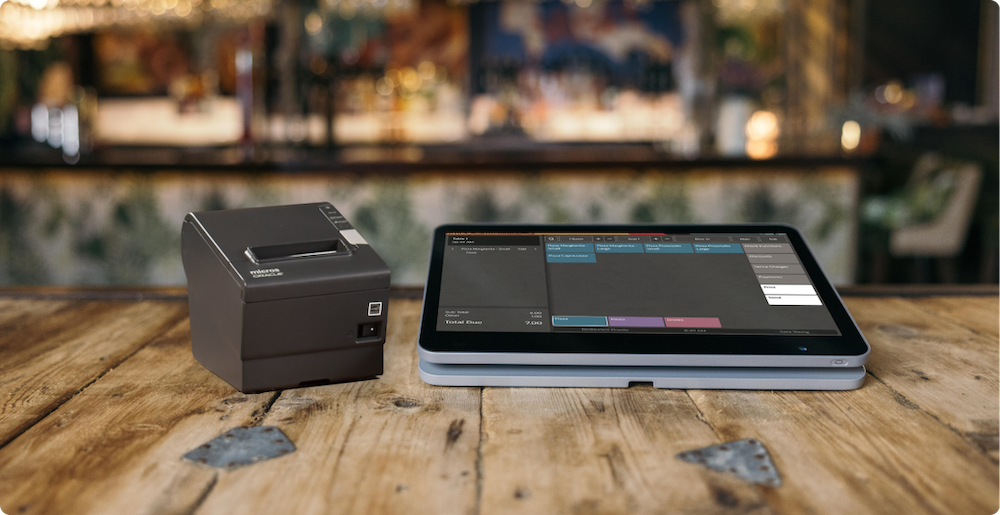
- Track menu item stocks in your POS, so you know how many leftover dishes you have at the end of the day and plan accordingly.
- Monitor sales patterns to identify slow-moving dishes and avoid waste by removing those that don’t sell.
- Accept digital payments by cards, smartphones, and smartwatches to encourage cashless transactions that come with environmental costs.
- Connect your POS to thermal kitchen printers to improve communication between front-of-house and back-of-house workstations. These fast printers consume less power than traditional printers and have advanced paper-saving capabilities.
QR code menus
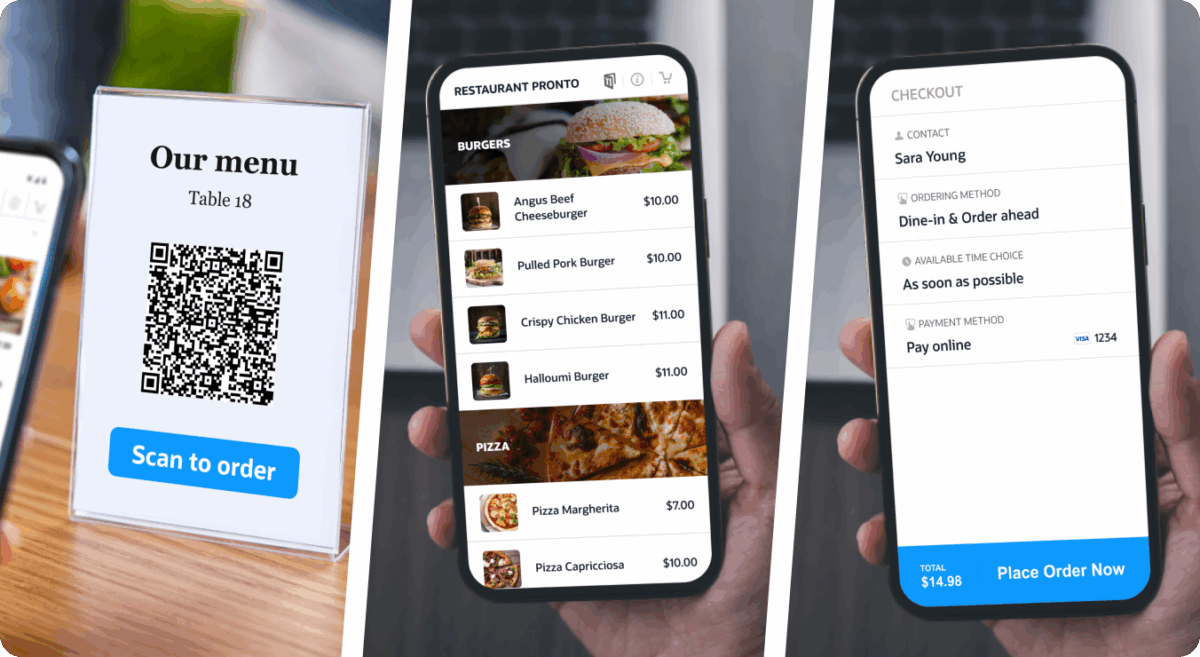
- Reduce paper waste by enabling customers to browse the menu on their smartphones by simply scanning a QR code.
- Eliminate the need for frequent reprinting by having all your menu updates instantly reflected in the digital menu.
- Reduce the number of staff needed per shift, so you can reallocate those resources to other sustainability practices, such as purchasing energy-efficient appliances.
Online ordering
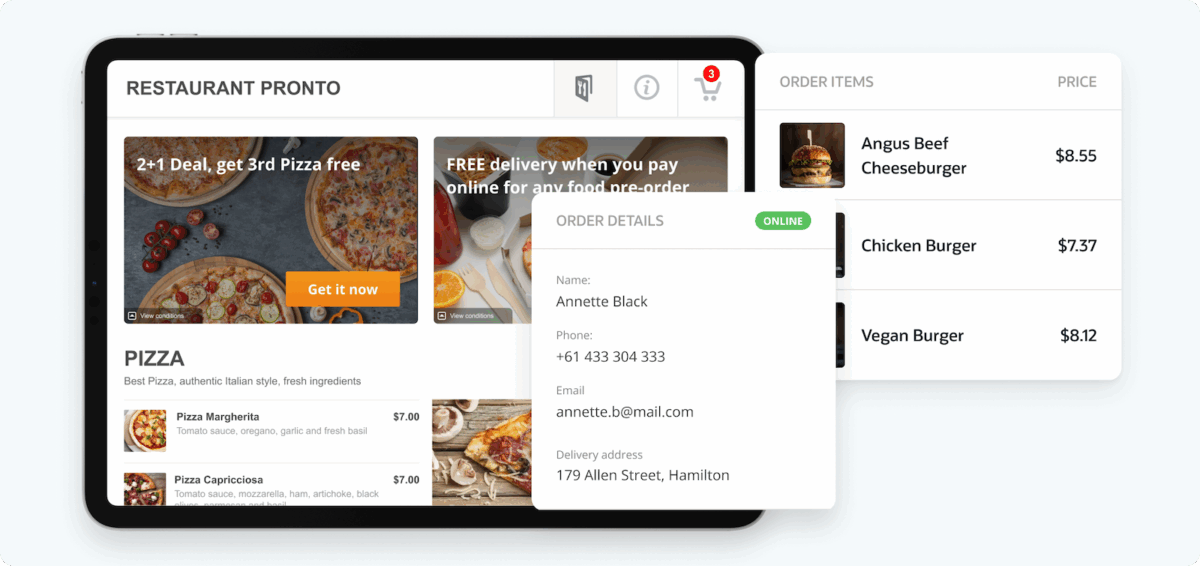
- Offer pickup options where customers can bring their own reusable containers to reduce packaging waste.
- Optimize delivery routes using heatmaps to identify where your most popular ordering spots are. That way, you can reduce fuel consumption and lower your carbon footprint by stopping deliveries to areas that are not profitable.
- Add end-of-day promotions at the top of the menu, such as free delivery, 50% off the entire menu, or buy one get one free, to encourage people to place late orders and lower food waste.
How the GloriaFood ecosystem can help you follow restaurant sustainability trends
- Our FREE POS starter kit can help you accept a variety of digital payments, track stocks, monitor sales patterns, and optimize the kitchen workflow, all of which make your restaurant more sustainable.
- We offer QR code ordering for free, so you can reduce paper waste, save money, and optimize the workflow. On premise orders can be set to get automatically accepted through the POS and sent to the kitchen for preparation.
- The GloriaFood POS comes with integrated online ordering (for pickup, delivery, and scheduled orders), delivery heatmaps for route optimization, and a built-in promotions module where you can create end-of-day promos in minutes. Online orders can also be automatically accepted through the POS.
Increase restaurant sustainability with GloriaFood’s technology stack
Get started by ordering your free POS starter kit
Let's goClosing Thoughts
Sustainability is increasingly important in the restaurant industry. Now that you know what restaurant sustainability trends to expect in 2026, you are ready to make the necessary changes to attract a more eco-friendly clientele. Start with the GloriaFood technology stack available at your fingertips.
Find Your Next Read
Craving even more restaurant industry trends and statistics? Check out these related articles:
Frequently Asked Questions
Sustainability in the restaurant industry refers to adopting practices that minimize your eatery’s environmental impact. Sustainable food trends include waste reduction, energy optimization, resource efficiency, locally sourced ingredients, sustainable packaging, and more.
The top five environmental issues affecting restaurants are:
- Food waste;
- Excessive water use;
- Excessive energy consumption;
- Plastic use;
- Emissions from cooking and transportation.
Greenwashing in the restaurant industry refers to the practice of purposefully misleading customers into believing your restaurant is more sustainable or environmentally friendly than it really is.
It includes restaurants that only pretend to follow the organic food trend, using terms like “organic” or “natural” without backing them up with evidence or labeling packaging as “biodegradable” without it being accurate.
Beef has the highest environmental impact due to its high greenhouse gas emissions. This is why restaurant sustainability trends include adding more plant-based items to the menu.
To make your restaurant eco-friendly, follow these tips:
- Reduce food waste;
- Sell more plant-based dishes;
- Source ingredients locally;
- Lower your energy use and carbon footprint;
- Recycle;
- Compost;
- Use eco-friendly packaging;
- Use technology and automation.
- 1. Reducing food waste from the menu planning stage
- 2. Adding more plant-based dishes to the menu
- 3. Sourcing ingredients locally
- 4. Increasing energy efficiency
- 5. Encouraging guests to adopt sustainable dining habits
- 6. Recycling and composting
- 7. Choosing eco-friendly packaging
- 8. Integrating technology and automation in restaurant operations
- What to read next
- Frequently asked questions
Get your restaurant POS system
More than [[restaurants_number]] customers have advanced their restaurant businesses with GloriaFood
